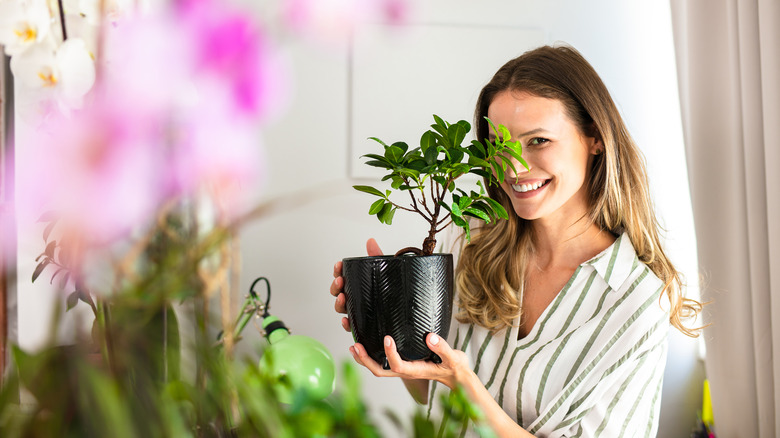
Houseplants can be finicky. Between finding the right room temperature, sunlight exposure and humidity, you may have a different regimen for each stem in your house. While you may think that your browning leaves come from overwatering, they may actually come from the type of water that you’re using.
Just like the amount of sunlight plants need, the water type that’s best for each type of stem varies. Mindbodygreen explains that tap water contains different minerals and levels of salt than rainwater, which can seriously impact the health of your greenery. The main culprit here is tap water with a high level of minerals like iron or copper, as these can damage your greenery. For instance, the outlet notes, peace lilies, birds of paradise and calatheas can struggle to filter out these deposits. Erin Marino, the editorial lead at a New York City-based shop The Sill, explains to the outlet, “These are plants that have more of a sensitivity to the salt and minerals that are found in tap water.”
Essentially, the build-up of these minerals can create an unhealthy salt balance in the soil that negatively impacts the pH in your plant’s pot. Apparently, a lack of moisture, root rot and stunted growth can all happen as a result, the outlet reports.
You can use rainwater or distilled water for your plants

To ensure that your stems are taken care of, you’ll want to find the correct type of water that best supports their overall health. According to Plantophiles, rain water works as a perfect hydrator as it replicates the natural hydrator that plants are used to in the wild. Loaded with high levels of oxygen and plant-supporting minerals, rainwater can be perfect for your plants that aren’t as sensitive. Otherwise, distilled water is best for finicky stems because it doesn’t contain potentially-toxic particles.
Furthermore, if you have a water softener in your home, your water may contain too much sodium to support healthy growth. Since these remove minerals like calcium and iron to replace them with potassium and sodium, this type of water may not be best for your greenery either. If you have a high level of salt in your water, stick with bottled, filtered or rainwater when it’s time to moisturize your soil.
A few signs that your plant could be struggling with what’s in your water include wilting and brown spots. Mindbodygreen explains that these symptoms also result from other care issues such as over or underwatering — making it tough to diagnose the culprit. But, if you notice a white residue on your leaves, this usually denotes an issue with the mineral content of the water you’re feeding it.
If you’ve noticed your stems starting to struggle, try switching up the type of water you use.
Source: Read Full Article
